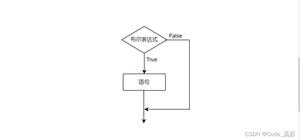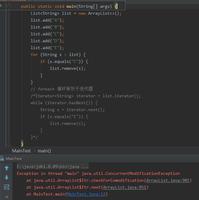Java数据结构——二叉树的遍历(汇总)

二叉树的遍历" title="二叉树的遍历">二叉树的遍历分为深度优先遍历(DFS)和广度优先遍历(BFS)
DFS遍历主要有:
- 前序遍历
- 中序遍历
- 后序遍历
一、递归实现DFS
Node.java:
public class Node {private Object data;
Node richild;
Node lechild;
public Object getData() {
return data;
}
public void setData(Object data) {
this.data = data;
}
public Node getRichild() {
return richild;
}
public void setRichild(Node richild) {
this.richild = richild;
}
public Node getLechild() {
return lechild;
}
public void setLechild(Node lechild) {
this.lechild = lechild;
}
public Node(Object data, Node lechild, Node richild) {
super();
this.data = data;
this.richild = richild;
this.lechild = lechild;
}
public Node() {
super();
}
}
递归遍历:
public class BTree {private static Node root;
//构造树
public static void init() {
Node node1 = new Node("A", null, null);
Node node2 = new Node("B", node1, null);
Node node3 = new Node("C", null, null);
Node node4 = new Node("D", node2, node3);
Node node5 = new Node("E", null, null);
Node node6 = new Node("F", null, node5);
Node node7 = new Node("G", node4, node6);
root = node7;
}
//访问节点
public static void visited(Node n) {
System.out.print(n.getData() + " ");
}
//前序遍历
public static void preOrder(Node n) {
if (n != null) {
visited(n);
preOrder(n.getLechild());
preOrder(n.getRichild());
}
}
//中序遍历
public static void inOrder(Node n) {
if (n != null) {
inOrder(n.getLechild());
visited(n);
inOrder(n.getRichild());
}
}
//后序遍历
public static void postOrder(Node n) {
if (n != null) {
postOrder(n.getLechild());
postOrder(n.getRichild());
visited(n);
}
}
public static void main(String[] args) {
init();
System.out.print("递归前序:");
preOrder(root);
System.out.println();
System.out.print("递归中序:");
inOrder(root);
System.out.println();
System.out.print("递归后序:");
postOrder(root);
System.out.println();
}
}
二、非递归实现DFS(依靠栈)
//前序遍历public static void preOrder(Node n) {
System.out.print("非递归前序:");
Stack<Node> stack = new Stack<>();
int index = 0;
while (n != null || index > 0) {
while (n != null) {
System.out.print(n.getData() + " ");
stack.push(n);
index++;
n = n.getLechild();
}
n = stack.pop();
index--;
n = n.getRichild();
}
}
//中序遍历
public static void inOrder(Node n) {
System.out.print("非递归中序:");
Stack<Node> stack = new Stack<>();
int index = 0;
while (n != null || index > 0) {
while (n != null) {
stack.push(n);
index++;
n = n.getLechild();
}
n = stack.pop();
System.out.print(n.getData() + " ");
index--;
n = n.getRichild();
}
}
//后序遍历
public static void postOrder(Node n) {
System.out.print("非递归后序:");
Stack<Node> stack = new Stack<>();
int index = 0;
Node lastVisited = null;
while (n != null || index > 0) {
while (n != null) {
stack.push(n);
index++;
n = n.getLechild();
}
n = stack.peek();
if (n.getRichild() == null || n.getRichild() == lastVisited) {
System.out.print(n.getData() + " ");
lastVisited = n;
index--;
stack.pop();
n = null;
} else {
n = n.getRichild();
}
}
}
三、实现层序遍历(依靠队列)
public static void LevenOrder(Node root) {if (root == null) {
return;
}
Queue<Node> queue = new LinkedList<>();
queue.add(root);
Node temp = null;
while (!queue.isEmpty()) {
temp = queue.poll();
visited(temp);
if (temp.getLeChild() != null) {
queue.add(temp.getLeChild());
}
if (temp.getRChild() != null) {
queue.add(temp.getChild());
}
}
}
以上是 Java数据结构——二叉树的遍历(汇总) 的全部内容, 来源链接: utcz.com/z/392141.html







